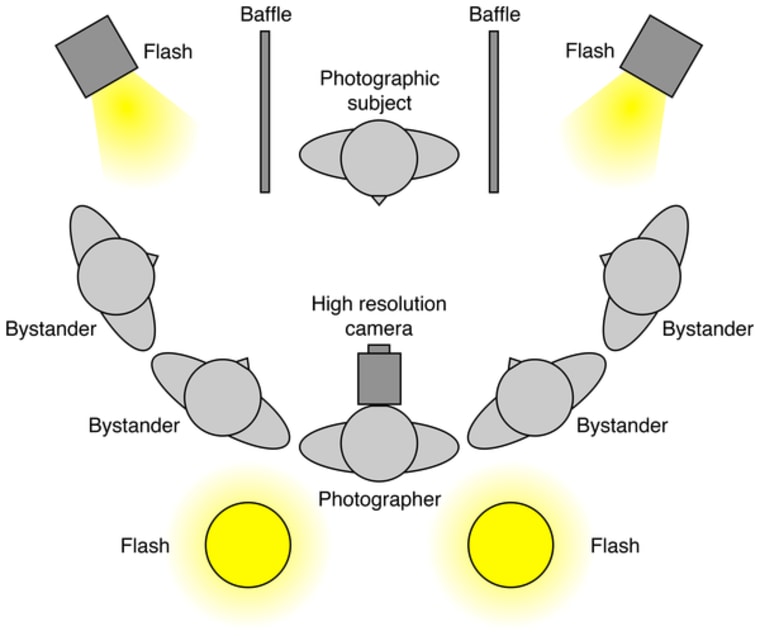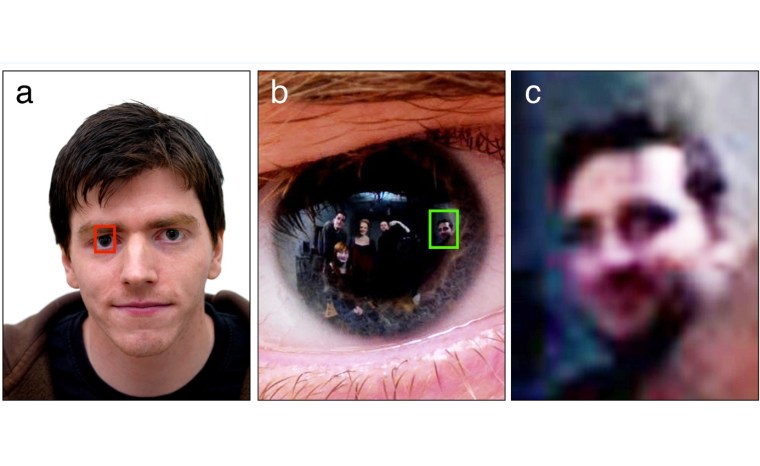It's the stuff of sci-fi, or at least of "CSI": British researchers have demonstrated a technique whereby faces reflected in a person's eye can be extracted from a picture. Zoom in far enough, it turns out, and that twinkle in your eye turns into a full-blown portrait.
Movie buffs may remember something like this appearing in the 1982 sci-fi classic "Blade Runner," in which a photo is "enhanced" to an unreasonable degree — and of course many a cop drama or mystery has relied on such photographic tricks as well to produce evidence. But this time it's for real.
Psychologists Rob Jenkins, of the University of York, and Christie Kerr, of the University of Glasgow, show that in the proper conditions, reflections off the pupil of the eye can contain enough details to identify faces. Potential applications aren't far off from the fictional representations: A picture of a victim might hide details of the attacker or surroundings.

The problem is getting enough light and resolution. The fact is that you're not going to get results like these with your camera phone. No matter how much you zoom in, the phone's cheap, dirty lens and tiny sensor can't produce enough detail to get faces out of someone's eye. Even a nice DSLR under ordinary circumstances might not be able to do it.
For the purposes of this experiment, Jenkins and Kerr had a special setup with a high-quality Hasselblad large-sensor camera and a few big, bright lights to get the reflections just so. It's not exactly real-world conditions, but perhaps in five or 10 years cameras will have improved enough that it won't matter.
It's not the only eyeball-snooping research out there. Another paper, by researchers at the University of North Carolina, showed how activity on a smartphone or laptop screen could be surreptitiously watched via the reflections in their users' eyes.
Jenkins and Kerr's paper, "Identifiable Images of Bystanders Extracted from Corneal Reflections," is freely available at the open journal PLOS One.
Devin Coldewey is a contributing writer for NBC News Digital. His personal website is coldewey.cc.
